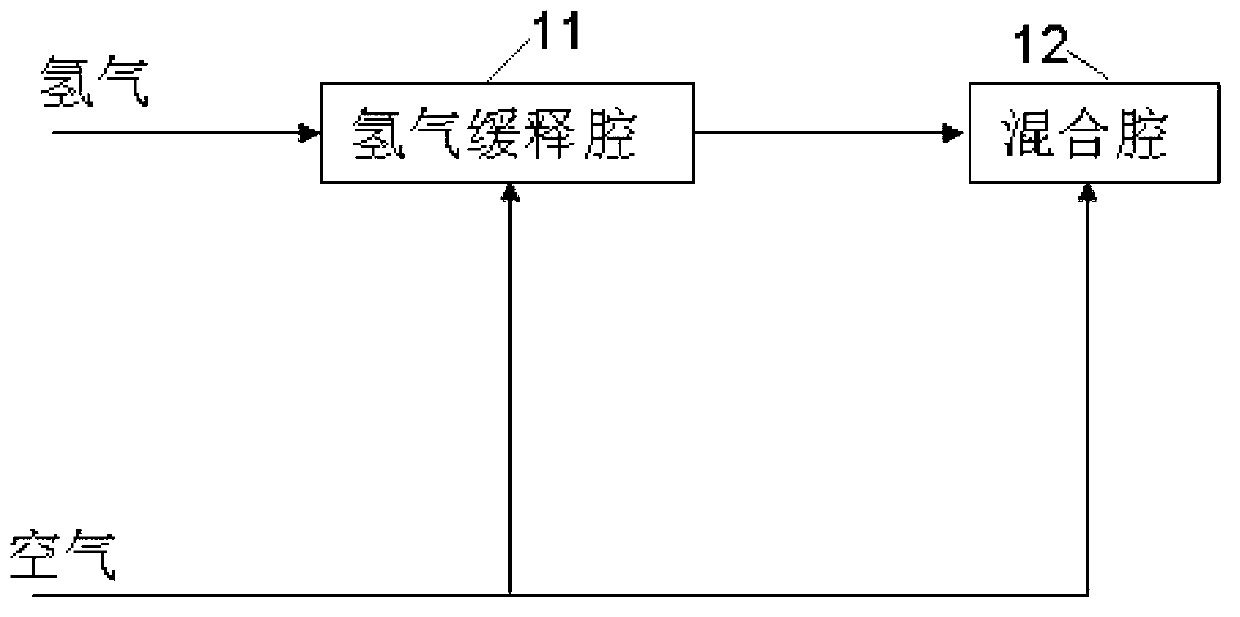Method for lowering peak concentration of exhaust hydrogen of fuel battery system
A fuel cell system, hydrogen technology, applied in fuel cells, fuel cell additives, electrical components, etc., can solve the problems of large hydrogen flow, reduce fuel cell system efficiency, affect fuel cell performance, etc., to reduce the peak hydrogen concentration, The effect of avoiding excessive hydrogen concentration and simple and reliable device structure
- Summary
- Abstract
- Description
- Claims
- Application Information
AI Technical Summary
Problems solved by technology
Method used
Image
Examples
Embodiment Construction
[0025] The technical solutions of the present invention will be further described below in conjunction with the accompanying drawings and embodiments.
[0026] A method for reducing the peak concentration of hydrogen in tail exhaust of a fuel cell system, the specific steps of the method are:
[0027] 11. Hydrogen slow release step: the air of the fuel cell system passes through the cathode tail outlet and is continuously and stably discharged into the hydrogen slow release chamber through the air guide tube; the hydrogen of the fuel cell system passes through the anode tail outlet and is discharged through the hydrogen guide tube Into the hydrogen slow-release chamber, the air in the hydrogen slow-release chamber is slow-released;
[0028] The hydrogen discharge of the fuel cell system adopts a pulse discharge method or a combination of continuous discharge and pulse discharge;
[0029] The ratio of the volume of the hydrogen slow release chamber to the hydrogen volume disch...
PUM
 Login to View More
Login to View More Abstract
Description
Claims
Application Information
 Login to View More
Login to View More - R&D
- Intellectual Property
- Life Sciences
- Materials
- Tech Scout
- Unparalleled Data Quality
- Higher Quality Content
- 60% Fewer Hallucinations
Browse by: Latest US Patents, China's latest patents, Technical Efficacy Thesaurus, Application Domain, Technology Topic, Popular Technical Reports.
© 2025 PatSnap. All rights reserved.Legal|Privacy policy|Modern Slavery Act Transparency Statement|Sitemap|About US| Contact US: help@patsnap.com



